Mood Boards: Dressing For Different Occasions
Tom Osborne, Former VP, Design
Article Category:
Posted on
For designers at Viget, Mood Boards are consistently among our favorite topics to discuss and deliverables to create. I wanted to shed a little more light on the subject to talk about some variations of the practice and how we look at them at Viget. Essentially, mood boards aren't a one-size-fits-all kind of thing and we have different approaches to them. Ultimately, we always have the same goal in mind – to start broad in efforts to get early feedback that will allow us to narrow our focus as we begin to work on the details of a design. I originally approached this subject back in 2008 looking at two variations of mood boards. Since then, our two variations have morphed into three. Here are some examples that illustrate what we mean.
Inspiration Boards
These are effectively collages of found inspiration. They don't take long and require little or no original design. We typically have one designer spend an hour or two on them. Usually only one direction is needed, though additional ones may be helpful. They are meant to establish "here's what we like", "here are some different approaches", and "here's generally the direction we'd like to go in". Inspiration boards are well-suited for small projects that move quickly. They are super easy to create, but risk having too much influence from existing sources. We often use these on our internal or pro-bono projects.
Examples of Inspiration Boards:
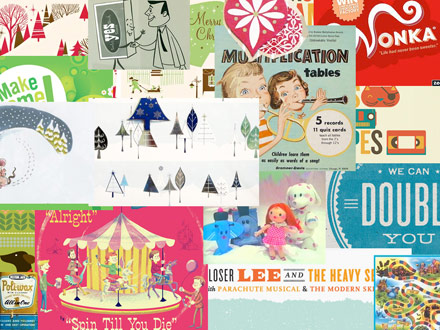
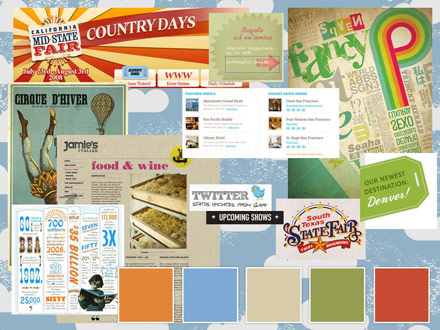
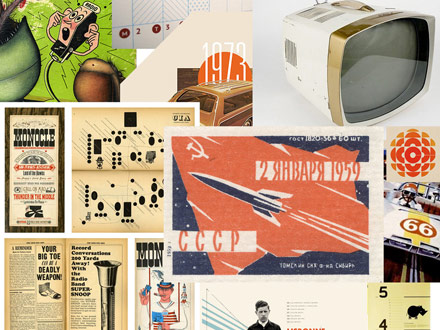
Summary:
- Purpose: Showing found inspiration as a base to get started
- Duration: 1 designer, 1 to 2 hours each
- Good for: internal, pro-bono, or otherwise small projects
Style Boards
Often times you need to show original design but don't necessarily need to illustrate any deep conceptual thinking. This is where Style Boards come in. Samantha Warren wrote about these recently and dubbed them "Style Tiles" which is a nicer, catchier name. Samantha goes on in her article to equate Style Tiles to carpet samples which is a pretty good analogy, in my opinion. Essentially, Style Boards begin to play with stylistic elements like color palettes, typography, and interface elements but only explore concept and mood on a basic, surface level. They can include elements of Inspiration Boards as a means to get started and/or illustrate existing examples. We typically have one or two designers spend around 2 to 4 hours on each Style Board. We like to use these on our app designs and for clients who already have some sort of brand identity guidelines from which to work from. In our opinion, these are not as valuable when you are looking to help define a brand, brand identity, or deeper concept.
Examples of Style Boards:
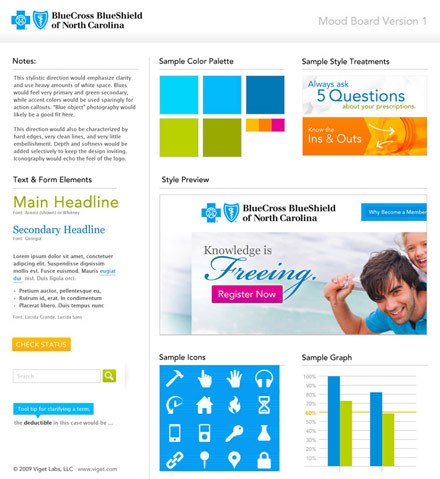
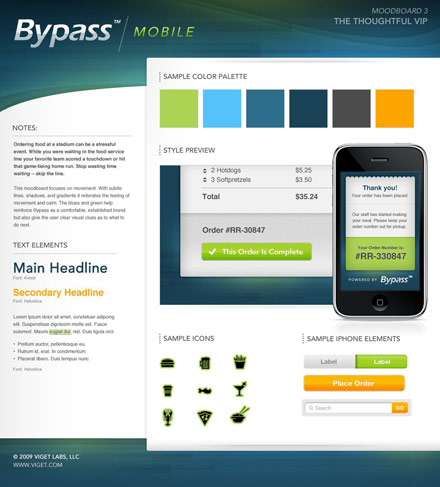
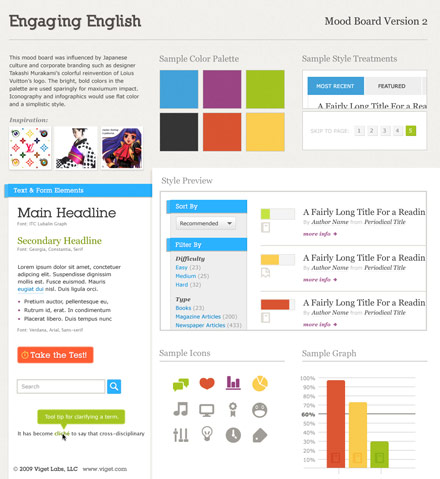
Summary:
- Purpose: Establishing color palettes, introducing typography, light styling of elements to illustrate a direction
- Duration: 1 or 2 designers, 2 to 4 hours each
- Good for: app designs or clients who already have brand identity guidelines
Concept Boards
These are the favorite of designers at Viget. Probably because they are the most fun to create. Sometimes you need to illustrate a story or concept and you need to show more than element styling to do so. Concept boards start with brainstorming concepts and ideas as a team and end with individual designers each taking one concept to explore. After anywhere from 4 to 8 hours, a designer will emerge with a rich, immersive design that's reflective of the idea they were tasked with illustrating. They also include styling like the Style Boards and inspiration like the Inspiration Boards. Essentially, this is where it all comes together. These are well-suited for small to large projects where exploring brand personality is essential to the assignment. The biggest downside to these that we've found is that clients can sometimes confuse these with compositional designs if they are not designed and explained properly. We try to show examples of existing work prior to beginning and re-state the purpose before presenting them to combat any confusion.
Examples of Concept Boards:
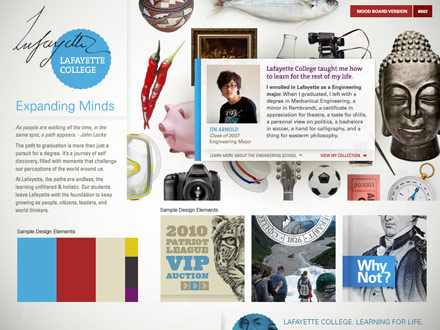
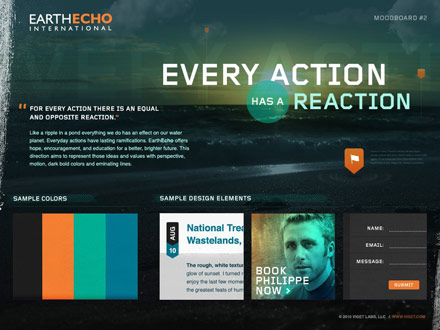
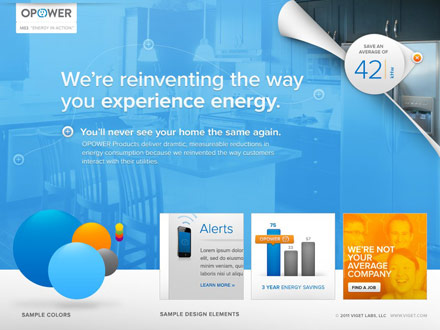
Summary:
- Purpose: For rich, immersive designs that need storytelling and brand personality
- Duration: 2 or 3 designers, 4 to 6 hours (light) / 6 to 8 hours (heavy) each
- Good for: start-ups, micro-sites and brand revitalization
A final note is that we refer to all three of these variations as Mood Boards when discussing internally and with clients. It's usually only when we're trying to decide the best approach when we break down the labels to Inspiration, Style, or Concept. It's just what has worked best for us so far. Also, we've found that Mood Boards aren't always necessary. For instance, if a client insists on having multiple, fully fleshed-out designs, Mood Boards become far less valuable. We prefer to offer choices at the Mood Board level over Comp level because it helps prevent the "Frakensteining" of pieces and parts of all the designs. We refer to this as as "Frankencomping". So that's it. Go forth, have fun, and remember to dress for the occasion.